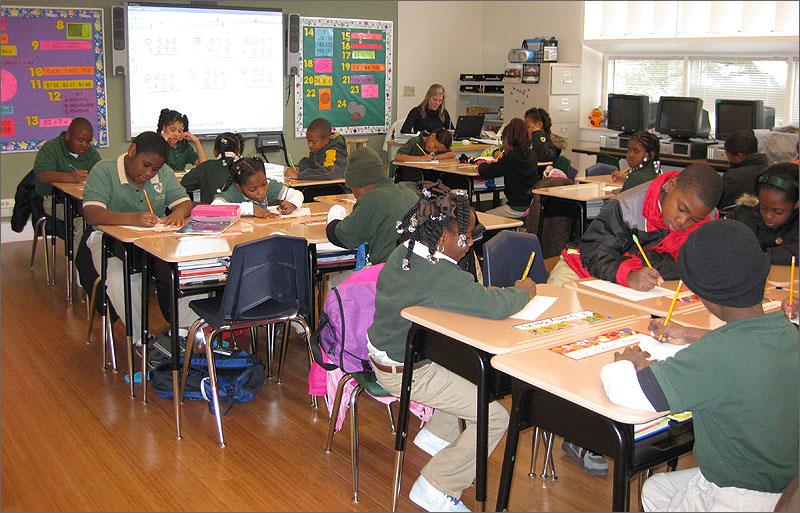School Desegregation: DOJ Action And Its Broader Consequences

Table of Contents
The DOJ's Role in Enforcing Desegregation
The DOJ's involvement in school desegregation is deeply rooted in the Civil Rights Movement and landmark legislation. The Civil Rights Act of 1964, for instance, empowered the DOJ to investigate and prosecute violations of desegregation laws. This act provided the legal framework for the DOJ to actively intervene in cases of school segregation across the nation.
-
Investigative Powers and Legal Strategies: The DOJ utilizes a range of investigative tools, including audits of school districts, investigations into discriminatory practices, and legal challenges to segregationist policies. Their legal strategies often involve filing lawsuits, negotiating consent decrees, and monitoring compliance with court orders.
-
Remedies Pursued: To achieve desegregation, the DOJ has employed various remedies. These include mandatory busing programs to transport students across district lines, redrawing school district boundaries to create more integrated schools, and ensuring equitable funding distribution to eliminate resource disparities between schools serving predominantly minority and majority populations.
-
Successful Interventions: The DOJ's interventions have yielded significant successes in certain instances, leading to the integration of previously segregated school systems and improved access to quality education for minority students. These successes, however, are often hard-won and require sustained effort.
-
Challenges Faced: The DOJ has encountered significant resistance in enforcing desegregation orders. This resistance has manifested in various forms, including legal challenges from local authorities, lack of cooperation from school districts, and insufficient funding to support the implementation of desegregation plans. Political opposition and deeply entrenched social biases have also significantly hampered progress.
The Impact of Desegregation on Academic Achievement
Research on the academic effects of school desegregation presents a complex picture. While some studies indicate positive impacts on minority students' academic achievement, others reveal more nuanced results. The impact varies depending on factors such as the specific desegregation strategy employed, the socioeconomic background of students, and the quality of the integrated schools.
-
Impact on Academic Performance: Desegregation has demonstrably benefited some minority students by providing access to better resources and more qualified teachers. However, the impact on majority students' academic performance is less clear, with some studies showing minimal effects and others suggesting potential negative consequences depending on the context.
-
Socioeconomic Factors: Socioeconomic status remains a significant factor influencing academic outcomes, regardless of school integration. Students from disadvantaged backgrounds often face challenges that are not easily overcome by desegregation alone, highlighting the need for comprehensive interventions that address both segregation and poverty.
-
Effectiveness of Desegregation Strategies: The effectiveness of different desegregation strategies (e.g., busing, magnet schools, controlled choice plans) has been a subject of ongoing debate. The ideal approach often depends on the specific circumstances of each school district.
-
Long-Term Effects: The long-term effects of desegregation on educational attainment and future opportunities are still being studied. However, evidence suggests that improved educational access can lead to better employment prospects and increased social mobility for minority students.
The Social and Political Consequences of Desegregation
The consequences of school desegregation extend far beyond academic achievement. It has profoundly impacted social and political landscapes, sparking both progress and significant backlash.
-
Racial Attitudes and Intergroup Relations: Desegregation has had a mixed impact on racial attitudes. While some studies suggest that integrated schools can foster better intergroup relations, others indicate that the process can be fraught with tension and conflict. The success of integration often hinges on community support and active efforts to build positive relationships between different racial groups.
-
The Civil Rights Movement: School desegregation played a pivotal role in the Civil Rights Movement, serving as a major catalyst for broader social justice efforts. The fight for equal educational opportunities became a powerful symbol of the broader struggle for racial equality.
-
"White Flight" and Political Backlash: The implementation of desegregation efforts often led to "white flight," with white families moving from integrated districts to more segregated ones. This phenomenon fueled political backlash and contributed to resistance against desegregation efforts.
-
Affirmative Action: The ongoing debate over affirmative action is intricately linked to school desegregation. Affirmative action policies aim to address historical inequities and promote diversity in education, but they remain a subject of controversy.
The Persistence of School Segregation
Despite decades of effort, de facto segregation persists in many school districts across the United States. This modern segregation is not explicitly mandated by law but rather arises from factors like residential segregation and school choice programs.
-
Factors Contributing to Modern Segregation: Housing patterns, which often reflect historical and ongoing racial discrimination, contribute significantly to school segregation. School choice programs, while intended to provide parents with more options, can inadvertently exacerbate segregation if not carefully designed and implemented.
-
The DOJ's Ongoing Role: The DOJ continues to play a role in addressing modern segregation, investigating discriminatory housing patterns and challenging policies that perpetuate segregation in schools. However, the legal landscape and the challenges are significantly different than in the era of explicit state-sponsored segregation.
-
Implications of Re-segregation: The re-segregation of schools undermines educational equity and has significant implications for social justice. It perpetuates inequalities in access to resources, quality education, and future opportunities for minority students.
Conclusion
The Department of Justice's involvement in school desegregation has been a defining element in the struggle for racial equality in the United States. While significant progress has been made, challenges persist. The ongoing fight for equitable education requires a multifaceted approach, including robust DOJ action, addressing socioeconomic disparities, and fostering inclusive communities. Understanding the complexities of school desegregation and the enduring impact of DOJ interventions is crucial for building a more just and equitable educational system for all. We must continue to advocate for effective policies and interventions to dismantle remaining barriers to achieving true school desegregation and ensuring equal opportunities for all students. Further research into the effectiveness of diverse school desegregation strategies is necessary to inform future policy and action.

Featured Posts
-
 Why Reform Uk Is In Danger Five Critical Analysis Points
May 03, 2025
Why Reform Uk Is In Danger Five Critical Analysis Points
May 03, 2025 -
 Reform Party Implodes Amid Leaked Farage Messages
May 03, 2025
Reform Party Implodes Amid Leaked Farage Messages
May 03, 2025 -
 The Impact Of Nigel Farage On Reform Uks Political Influence
May 03, 2025
The Impact Of Nigel Farage On Reform Uks Political Influence
May 03, 2025 -
 Netherlands Largest Heat Pump Utrecht Wastewater Plant Innovation
May 03, 2025
Netherlands Largest Heat Pump Utrecht Wastewater Plant Innovation
May 03, 2025 -
 Lee Andersons Attack On Rupert Lowe A Major Blow To Conservative Party Reform
May 03, 2025
Lee Andersons Attack On Rupert Lowe A Major Blow To Conservative Party Reform
May 03, 2025
